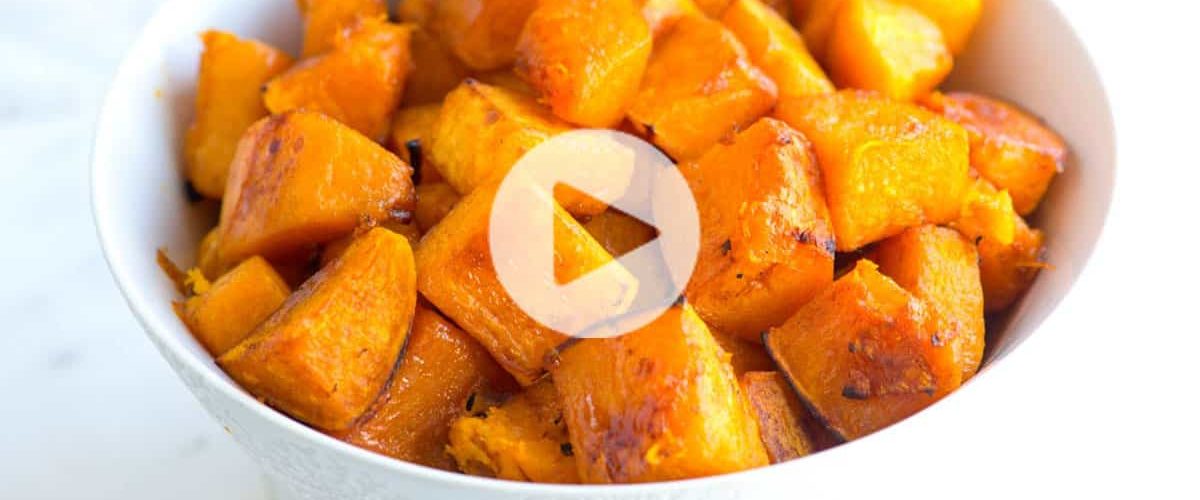Butternut Squash is a delicious side dish or treat, depending on how it is prepared. Cooking butternut squash in the oven is the best way to create a moist and delicious dish. This type of squash is very thick and hard to cut. It is important to use a very sharp or serrated knife and a stable cutting board to cut the squash. Extreme caution should be taken when doing this anyway because many people have cut their fingers attempting to cut butternut squash in one quick motion.
Once the butternut squash has been cut in half successfully, scoop out all of the inner seeds and strings. These will just harden if they are cooked and are not beneficial for any added flavor or texture. Rub the outer sides of the squash with butter or margarine and set it aside for a few minutes. Lightly grease a baking dish or cookie sheet, then add about 2 cups of water to it. Adding water will ensure the squash comes out of the oven moist; failure to add water may result in a dry and somewhat chewy squash texture.
Turn the oven to 350 degrees Farenheit and let it heat sufficiently before putting the squash in the oven. Butternut squash takes about a total time of 1 hour to cook completely. Place the squash halves on the baking pan with the flesh side facing upward. Be sure the oven rack is in the center of the oven, then place the squash in the oven. After 30 minutes, remove the squash and drizzle more butter over the flesh side of the squash, then let it sit for a few minutes and absorb. Those who like salty flavors may want to add a light dusting of salt over the top of the squash. Turn the squash pieces over so the flesh is sitting in the water, facing downward. Return the squash halves to the oven for another 30 minutes, then remove them from the oven and test them with a fork. When a fork is inserted into the flesh of the squash, it should pierce it very easily. Flesh is done when it is tender throughout. Let the squash cool for at least 15 minutes and turn the oven off.
When the squash has had ample time to cool, use a fork or spoon to remove the flesh from the squash, transferring it to a bowl. Be careful not to use bare fingers to scoop out the flesh as this may result in burning. Once all of the flesh has been scooped into a bowl, it may then be seasoned and served. While the flesh of the butternut squash is still warm in the bowl, add a little margarine or butter to it and a mixture of either salt and pepper or cinnamon and brown sugar. The salt and pepper option is best suited for those who plan to serve the squash as a side dish with a meat main course. When making butternut squash with a meal that implements sweets or as a desert, the cinnamon and brown sugar option is the optimal choice.
For a little variation for those who enjoy a grilled taste but don’t have access to a grill, this result may be achieved in the oven by following the exact same directions above, but cutting the cooking time in half and instead broiling the squash with extra butter on the flesh for the last 5-10 minutes. With this method the flesh side should face downward during the first baking step, then upward during the broiling process.







